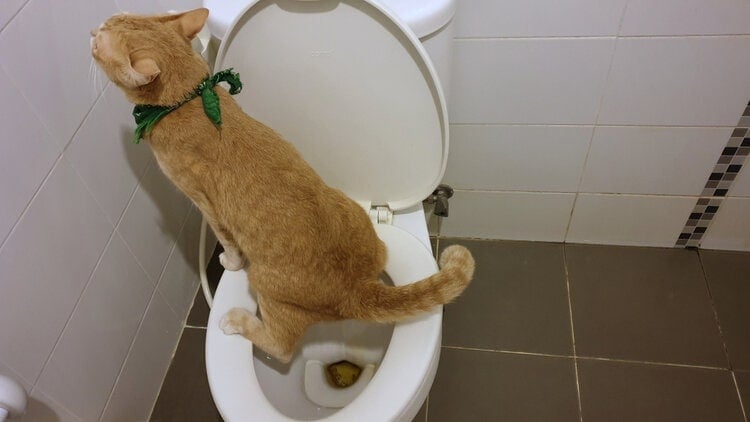Prevent Bathroom Emergencies: Don't Flush Cat Poop Down Your Toilet - Expert Guidance
Prevent Bathroom Emergencies: Don't Flush Cat Poop Down Your Toilet - Expert Guidance
Blog Article
We've uncovered this great article about Can You Flush Cat Poo or Litter Down the Toilet? listed below on the web and accepted it made good sense to relate it with you here.

Introduction
As pet cat owners, it's essential to bear in mind exactly how we get rid of our feline buddies' waste. While it might seem hassle-free to purge cat poop down the bathroom, this method can have damaging consequences for both the setting and human health.
Ecological Impact
Flushing cat poop introduces unsafe pathogens and bloodsuckers right into the water supply, positioning a substantial threat to marine ecosystems. These contaminants can negatively affect marine life and compromise water quality.
Health Risks
In addition to environmental concerns, purging pet cat waste can additionally present health and wellness dangers to humans. Cat feces might consist of Toxoplasma gondii, a parasite that can cause toxoplasmosis-- a possibly serious disease, particularly for expectant ladies and individuals with damaged immune systems.
Alternatives to Flushing
Thankfully, there are much safer and extra responsible ways to get rid of feline poop. Take into consideration the adhering to choices:
1. Scoop and Dispose in Trash
One of the most usual method of taking care of feline poop is to scoop it into an eco-friendly bag and throw it in the garbage. Make sure to make use of a specialized litter inside story and dispose of the waste without delay.
2. Use Biodegradable Litter
Select biodegradable feline clutter made from materials such as corn or wheat. These trashes are eco-friendly and can be safely thrown away in the trash.
3. Bury in the Yard
If you have a lawn, take into consideration burying cat waste in an assigned location far from veggie gardens and water sources. Make sure to dig deep adequate to prevent contamination of groundwater.
4. Mount a Pet Waste Disposal System
Invest in a pet garbage disposal system particularly created for cat waste. These systems make use of enzymes to break down the waste, reducing odor and ecological influence.
Conclusion
Responsible animal ownership prolongs past giving food and sanctuary-- it also involves proper waste management. By refraining from flushing cat poop down the toilet and opting for alternative disposal methods, we can minimize our ecological impact and secure human health and wellness.
Why Can’t I Flush Cat Poop?
It Spreads a Parasite
Cats are frequently infected with a parasite called toxoplasma gondii. The parasite causes an infection called toxoplasmosis. It is usually harmless to cats. The parasite only uses cat poop as a host for its eggs. Otherwise, the cat’s immune system usually keeps the infection at low enough levels to maintain its own health. But it does not stop the develop of eggs. These eggs are tiny and surprisingly tough. They may survive for a year before they begin to grow. But that’s the problem.
Our wastewater system is not designed to deal with toxoplasmosis eggs. Instead, most eggs will flush from your toilet into sewers and wastewater management plants. After the sewage is treated for many other harmful things in it, it is typically released into local rivers, lakes, or oceans. Here, the toxoplasmosis eggs can find new hosts, including starfish, crabs, otters, and many other wildlife. For many, this is a significant risk to their health. Toxoplasmosis can also end up infecting water sources that are important for agriculture, which means our deer, pigs, and sheep can get infected too.
Is There Risk to Humans?
There can be a risk to human life from flushing cat poop down the toilet. If you do so, the parasites from your cat’s poop can end up in shellfish, game animals, or livestock. If this meat is then served raw or undercooked, the people who eat it can get sick.
In fact, according to the CDC, 40 million people in the United States are infected with toxoplasma gondii. They get it from exposure to infected seafood, or from some kind of cat poop contamination, like drinking from a stream that is contaminated or touching anything that has come into contact with cat poop. That includes just cleaning a cat litter box.
Most people who get infected with these parasites will not develop any symptoms. However, for pregnant women or for those with compromised immune systems, the parasite can cause severe health problems.
How to Handle Cat Poop
The best way to handle cat poop is actually to clean the box more often. The eggs that the parasite sheds will not become active until one to five days after the cat poops. That means that if you clean daily, you’re much less likely to come into direct contact with infectious eggs.
That said, always dispose of cat poop in the garbage and not down the toilet. Wash your hands before and after you clean the litter box, and bring the bag of poop right outside to your garbage bins.
https://trenchlesssolutionsusa.com/why-cant-i-flush-cat-poop/

I'm certainly very serious about How to Dispose of Cat Poop and Litter Without Plastic Bags and I'm hoping you appreciated the new page. Do you know about someone else who is sincerely interested in the niche? Be sure share it. Bless you for your time. Come back soon.
Give Me A Quote! Report this page